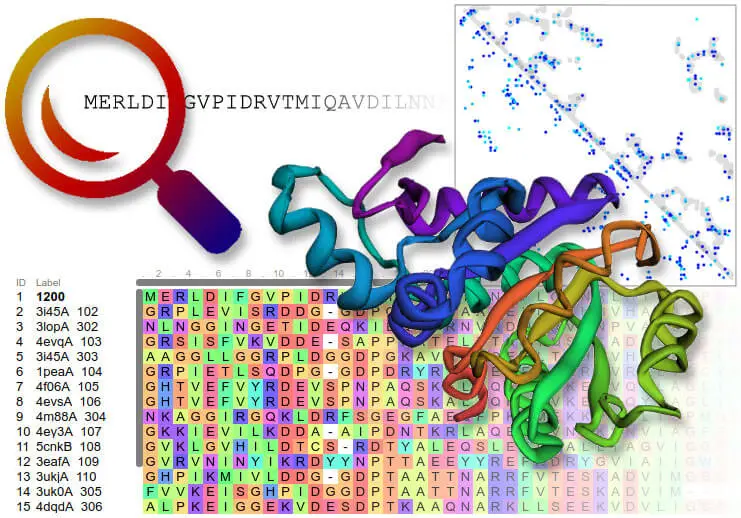In scientific world, we often hear about “Biological Data,” which basically means important info derived from living organisms and their environment. It is like the building blocks for scientific study, including a bunch of information, from tiny details in our DNA to bigger things like how ecosystems work.
Understanding the varied types of biological data and their corresponding formats is essential for scientists and data scientists to perform researches for healthcare, medicine, biotechnology and clinical analysis.
This article will take you through the different types of biological data and how we store them for modern biological research.
Types of Biological Data
1. Genomic Data
One prominent type of biological data is genomic data, which comprises the genetic information present within an organism. The DNA sequences, constituting genes and non-coding regions, hold the key to understanding hereditary traits and genetic diversity. In recent years, advancements in high-throughput sequencing technologies have revolutionized the acquisition of genomic data. It has enabled researchers to understand things genetic variations, mutations and gene expressions.
Explore beginner’s guide on step by step genomic analysis in Python and R language
2. Proteomic Data
Biological systems operate through proteins, whether it is in form of enzymes, muscular structures or hormones. Proteomic data sheds light on the diverse array of proteins present in a cell or organism. This type of data provides insights into protein structure, function, and interactions, contributing crucial information to our understanding of cellular processes and mechanisms.

3. Metabolomic Data
Metabolomic data focuses on small chemical molecules in our cells called metabolites. They could be antibodies, glucose, signaling molecules or many others. Metabolomics is an emerging field which gives us a snapshot of what’s happening in our bodies at a chemical level. By analyzing metabolites, researchers gain valuable information about metabolic pathways, disease markers, and the overall physiological state of an organism.
4. Transcriptomic Data
Transcriptomic data explains expression of genes, by cataloging the complete set of mRNA in a cell. mRNAs are responsible for decoding DNA message into functional proteins. Studying and maintaining their biological data is known as expression profiling. Understanding gene expression patterns is fundamental for unraveling cellular processes, developmental stages, and responses to external stimuli. Researchers often use technologies like RNA sequencing to generate transcriptomic data sets, to explore gene activity.
5. Structural Data
Biological structures, from the microscopic level of proteins to the macroscopic level of organisms, constitute another dimension of biological data. Techniques such as X-ray crystallography and cryo electron microscopy generate structural data, allowing researchers to visualize the three-dimensional architecture of molecules and organisms.
6. Spatial Data
Spatial data in biology refers to information about the physical arrangement of biological entities within a given space. Regarding human beings, it is like mapping of where things are in our body. Spatial data could range from the distribution of cells in tissues to the ecological dispersal of species in an ecosystem.
Technologies like fluorescence in situ hybridization (FISH) and spatial transcriptomics form spatial data, to enable a deeper understanding of biological organization.

Formats of Biological Data
With so many types of biological data, diverse formats have emerged to accommodate the specific characteristics of each data type. The adoption of standardized formats is crucial for seamless data sharing, integration, and analysis within the scientific community.
1. FASTA Format
The FASTA format is a widely used standard for representing nucleotide or protein sequences. Its simplicity and clarity make it a go-to format for storing genomic and protein sequence data. Each entry in a FASTA file consists of a description line starting with a greater-than symbol followed by the sequence data.
2. SAM/BAM Format
The Sequence Alignment/Map (SAM) format and its binary counterpart (BAM) are pivotal for storing genomic alignments. These formats efficiently represent how sequence reads align to a reference genome, facilitating the identification of variants, such as single nucleotide polymorphisms (SNPs) and insertions/deletions (indels).
3. BED Format
Biologists often work with genomic features such as genes, regulatory regions, and chromosomal annotations. The BED format offers a concise and versatile way to represent such features. It comprises columns specifying chromosomal coordinates, allowing for easy visualization and analysis of genomic annotations.
4. CSV Format
For more tabular biological data, the Comma-Separated Values (CSV) format stands as a versatile choice. Whether its gene expression data, clinical information, or metadata, the CSV format provides a straightforward structure that is easily accessible by a wide range of data analysis tools.
Biological data comprises varied forms, from tiny details in our genes to big pictures of spatial arrangements of cells. Each type of biological data contributes uniquely to our understanding of living systems.
As science keeps moving forward, our understanding of biological data will keep growing. The adoption of formats like FASTA, SAM/BAM, BED, and CSV facilitates collaboration, reproducibility, and the seamless exchange of biological insights.
The types and formats of biological data represents the collaborative efforts of scientists worldwide. As technology evolves and our understanding deepens, the language of biological data will continue to evolve, opening new avenues for discovery, innovation and biological data science careers.
Explore more about biological data science career choices to look forward to in 2024



